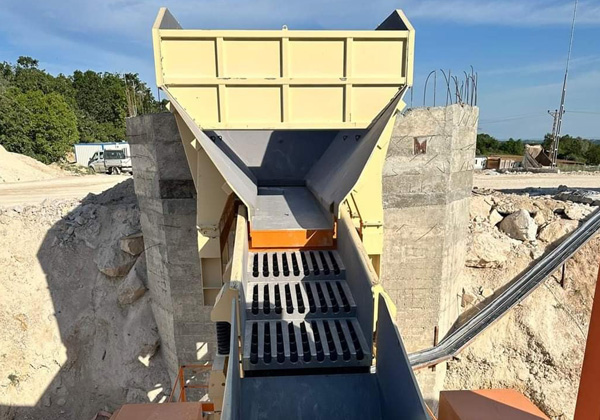Introduction to Vibrating Feeders in Mining
In the mining industry, vibrating feeders play a crucial role in material handling processes, offering a reliable method for moving large quantities of material from one stage of production to the next. Their primary purpose is to regulate and control the flow of materials like ores, rocks, and minerals from hoppers, silos, or storage units to crushers, conveyors, or screening equipment. Vibrating feeders are especially valued for their ability to handle bulk materials efficiently, reduce manual labor, and ensure continuous feeding in mining operations.

Working Principle of Vibrating Feeders
A vibrating feeder operates based on the principle of vibrations generated by electromagnetic or mechanical drives. These vibrations cause the material on the feeder’s tray to move forward in a controlled manner. The amplitude and frequency of the vibrations can be adjusted according to the material’s size and the required feed rate. This controlled motion prevents material jamming and ensures an even, consistent flow, which is essential for mining operations to prevent delays in downstream processes like crushing or grinding.
Applications in Ore Processing
Vibrating feeders are essential in ore processing, where they are used to feed crushers and screens. In this stage, it is crucial to regulate the amount of ore fed into the crushers to optimize their performance and avoid overloading. These feeders ensure that ore is evenly distributed, enhancing the efficiency of the crushing process. Whether the material is copper, iron, or gold ore, the use of vibrating feeders improves throughput and minimizes material handling issues, contributing to the overall productivity of the mining operation.
Advantages of Vibrating Feeders in Mining
One of the major advantages of using vibrating feeders in mining is their ability to handle a wide range of materials, from fine powders to large rocks. They are also highly efficient, with low energy consumption, making them ideal for large-scale mining operations. Their robustness allows them to withstand harsh mining environments, such as exposure to dust, moisture, and heavy-duty usage. Additionally, vibrating feeders reduce spillage and material loss, helping mining companies maximize resource utilization and maintain operational efficiency.
Future Trends and Innovations
With the continuous advancement of mining technology, vibrating feeders are being integrated with smart systems to enhance automation and real-time monitoring. Innovations such as variable frequency drives (VFDs) and smart sensors enable feeders to adjust feed rates automatically based on process demands. This not only increases efficiency but also reduces wear and tear on equipment. The future of vibrating feeders in mining lies in their increasing adaptability to changing material properties and their integration with automated control systems for more sustainable and efficient operations.

